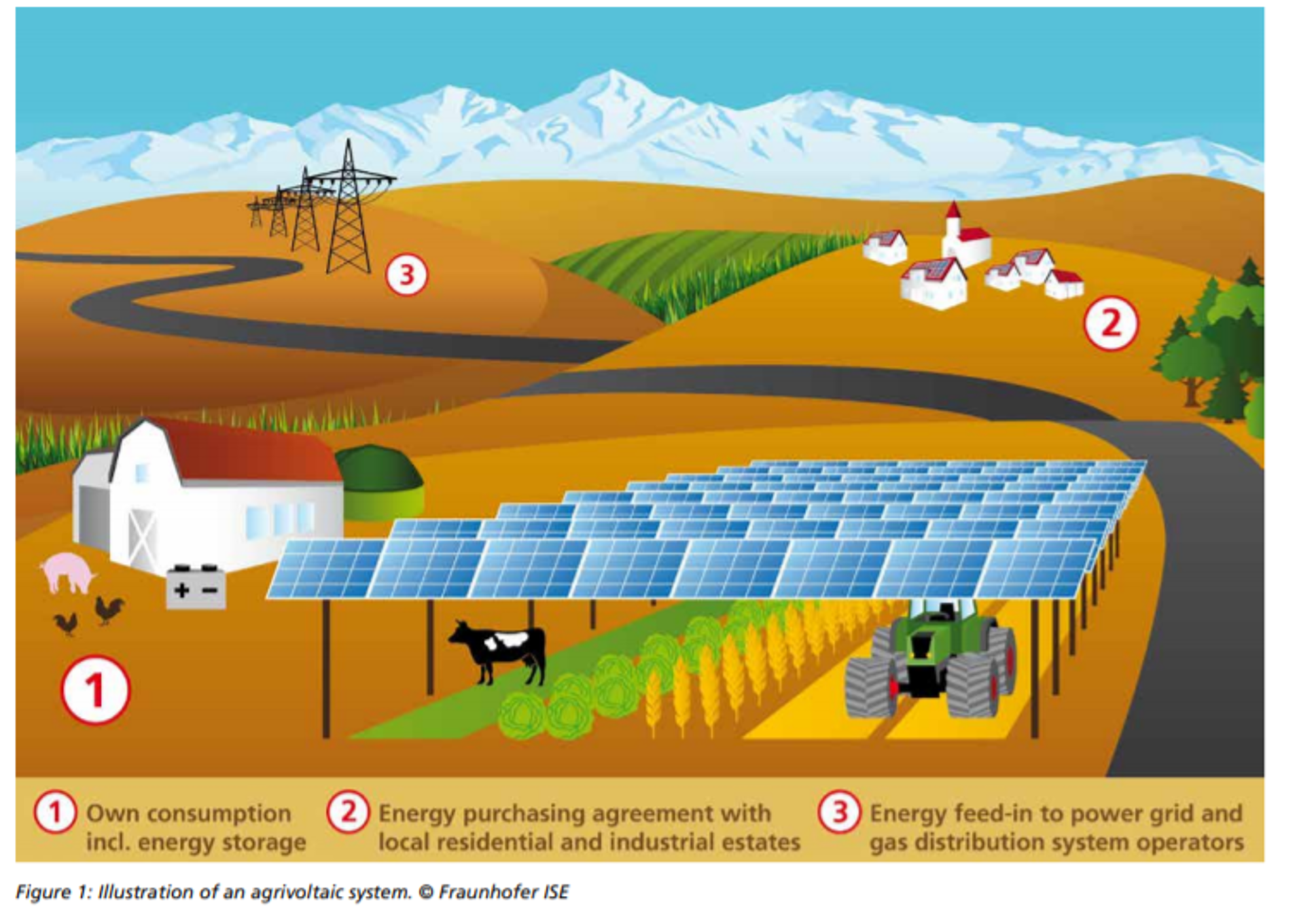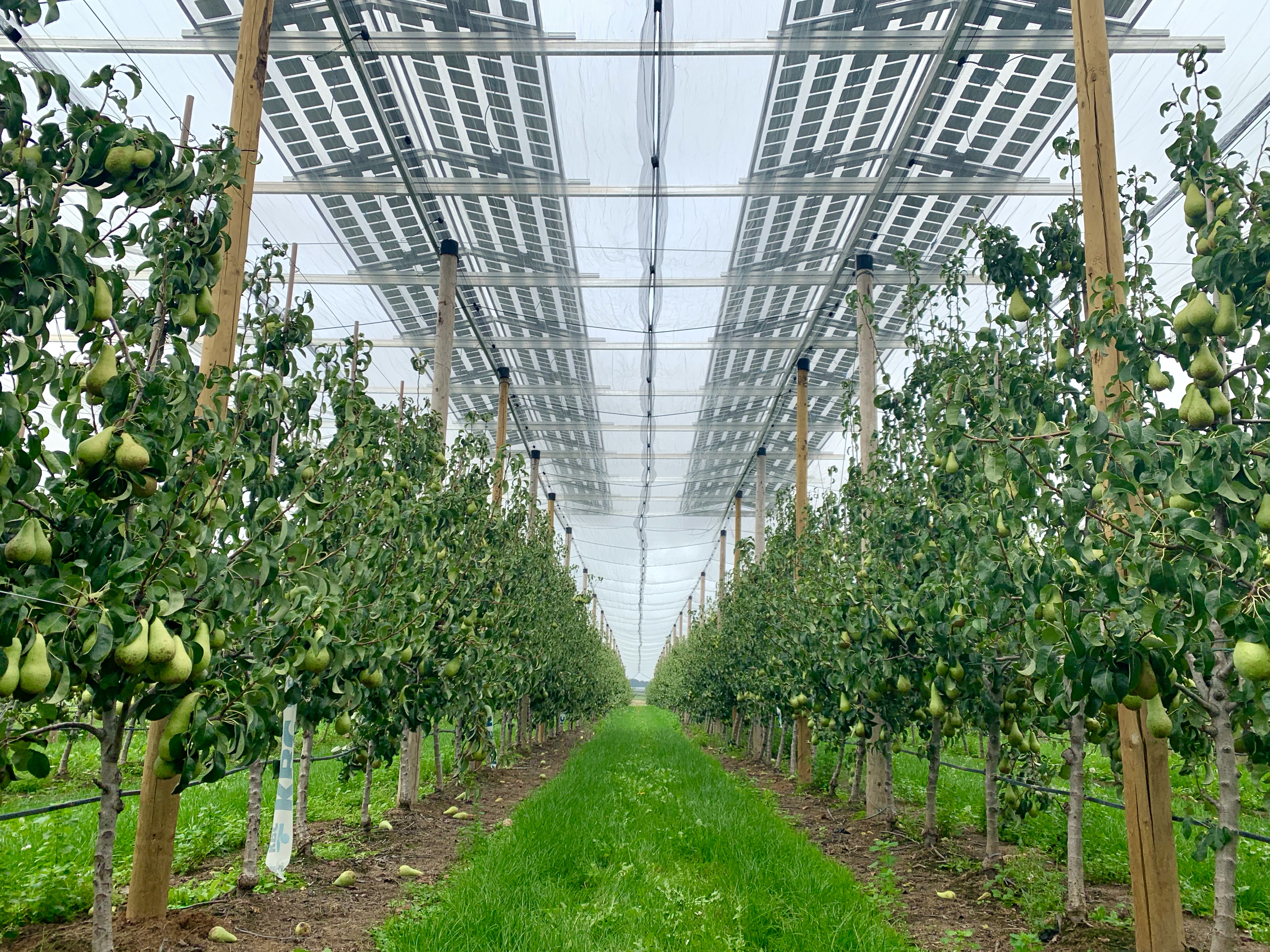Fruit and particular crops that are increasingly affected by hail, frost, and drought damage may benefit from the protection provided by the partial roofing with PV modules.

Figure: Illustration of an agrivoltaic system. The PV production can be used for 1) Own consumption, including energy storage, 2) Energy purchasing agreement with local residential and industrial states, 3) energy feed-in to power grid and gas distribution system operators. (Source: Fraunhofer ISE)
Agrivoltaics enables the dual use of arable land: Photovoltaic modules (That can be standard PV panels, bifacial PV panels, transparent ones, etc.), which are mounted on a structure (tested in a facility with a 5-meter clearance height), generate renewable electricity and underneath agricultural crops grow. The approach increases land efficiency and could mitigate conflicts over the use of arable land in the future. It has been tested in crops such as winter wheat, potatoes, tea, and celery.
Fraunhofer ISE at a site in India found that agrivoltaic systems can boost tomato and cotton yields by up to 40%.
Different module technologies can be used: Transparent back covering (allow light to largely pass through the space between the cells), bifacial modules (use ambient light incident on the reverse side), thin film modules (lower mass, lower efficiency), organic photovoltaics (selective spectral adjustment can be used), concentrator photovoltaics (needs solar tracking, which can increase costs).

Figure: Pear cultivation with semi-transparent panels in Europe (See more examples in: https://www.agrovoltaics.com/index.php)
Comments ()